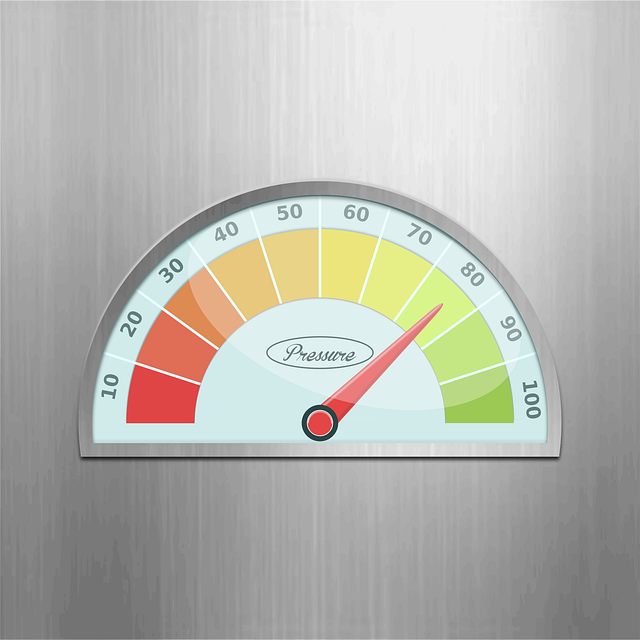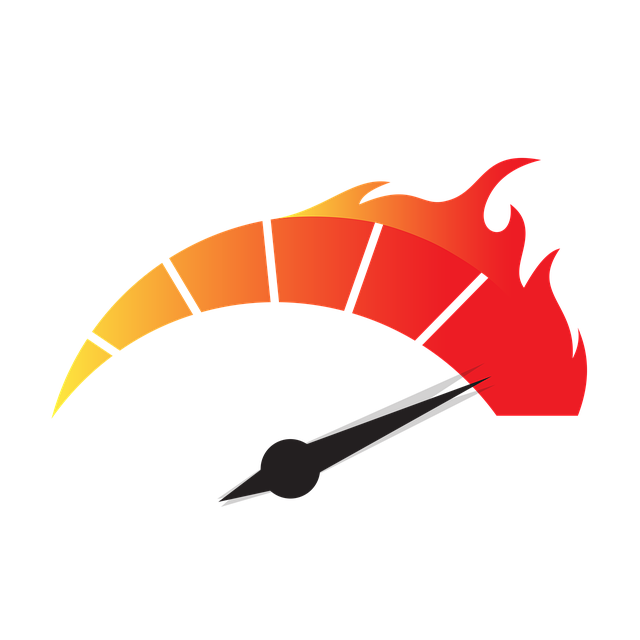Top 10 TradingView Indicators: In-Depth Guide for Smarter Trading
Author: Jameson Richman Expert
Published On: 2025-08-14
Prepared by Jameson Richman and our team of experts with over a decade of experience in cryptocurrency and digital asset analysis. Learn more about us.
In the fast-paced, often unpredictable realm of trading—encompassing cryptocurrencies, stocks, commodities, and Forex—having a comprehensive toolkit of highly effective technical indicators is crucial for maintaining a competitive edge. TradingView, a leading platform renowned for its user-friendly interface and advanced charting features, offers an extensive library of technical analysis tools. These indicators serve not only as visual aids but as critical analytical instruments that decode market sentiment, identify potential reversal points, and confirm trend strength. Over years of active trading and rigorous testing, I’ve developed a nuanced understanding of how to leverage these tools individually and synergistically. This in-depth guide explores the top 10 TradingView indicators, detailing their inner workings, strategic applications, and how to optimize their use for smarter, more data-driven trading decisions.

Why TradingView Indicators Are Essential for Modern Traders
Technical indicators on TradingView transcend simple visual cues—they form the backbone of a disciplined and informed trading strategy. They automate the recognition of price patterns, reduce emotional biases that often cloud judgment, and streamline decision-making processes. For instance, moving averages (MAs) distill complex price data into digestible signals by filtering out short-term fluctuations, providing a clearer view of the prevailing trend. Oscillators like RSI and Stochastic are vital for pinpointing overbought or oversold conditions, often serving as early warning signs for potential reversals or pullbacks. When combined with volume analysis, trend overlays, and pattern recognition, they create a layered, robust analytical framework that enhances predictive accuracy. From swing traders aiming to catch medium-term moves to day traders executing rapid entries and exits, utilizing a well-rounded set of indicators is essential for adapting strategies dynamically and increasing the probability of favorable outcomes. The key lies in selecting the right indicators suited to specific market conditions and understanding their inherent limitations to avoid over-reliance or misinterpretation.
My Personal Journey: Failures, Insights, and Breakthroughs
Early in my trading career, I relied heavily on popular indicators like RSI and Bollinger Bands without a structured approach. This often led to false signals, premature entries, and emotional decision-making that undermined profitability. Over time, through diligent backtesting, paper trading, and real-world application, I realized that the effectiveness of an indicator depends heavily on the current market context—be it trend strength, volatility, or timeframe. For example, RSI can remain overbought or oversold for extended periods in trending markets, making it less reliable unless corroborated with other signals. Bollinger Bands work well in sideways consolidations but can produce misleading signals during strong trending moves, such as false breakouts. This iterative learning process—embracing both failures and successes—allowed me to develop a more sophisticated approach: combining indicators thoughtfully, integrating broader market fundamentals, and paying close attention to price action, volume, and macroeconomic news. The overarching lesson is to view indicators as tools within a holistic trading framework rather than standalone signals, ensuring a balanced and adaptable strategy.
Deep Dive into the Top 10 TradingView Indicators
- Moving Averages (MA):
Moving averages are arguably the most fundamental trend-following tools, providing a smoothed representation of price data to reveal the dominant trend direction. The Simple Moving Average (SMA), typically set at 50 and 200 periods, is widely used to gauge long-term market sentiment—golden crosses (when the 50-SMA crosses above the 200-SMA) often signal bullish momentum, whereas death crosses suggest potential reversals. The Exponential Moving Average (EMA), which assigns greater weight to recent prices, reacts faster to recent market changes, making it especially useful for short-term and intraday trading. Advanced traders leverage multiple MAs—such as a 20-EMA combined with a 50-SMA—to identify trend strength, crossover signals, and strategic entry points. Moreover, dynamic support and resistance levels can be derived from MAs, which, when aligned with other indicators like volume or momentum oscillators, strengthen the validity of trade signals. Combining these with trendline analysis or Fibonacci retracement levels further improves timing and risk management.
- Relative Strength Index (RSI):
RSI measures the magnitude and velocity of recent price movements on a scale from 0 to 100, providing insights into momentum and potential overbought or oversold conditions. Readings above 70 are traditionally considered overbought, signaling possible retracement opportunities, while below 30 suggests oversold conditions that may precede a bounce. However, in trending markets, RSI can remain in overbought or oversold territory for prolonged periods, which requires traders to interpret signals within context—using trend filters or divergence analysis to avoid false alarms. Divergence—where RSI moves contrary to price—serves as a strong early warning of weakening momentum and impending reversal. Combining RSI with other signals, such as volume spikes or trend confirmation indicators, enhances reliability. For example, an overbought RSI during a strong uptrend may have less significance than in a sideways consolidation, underscoring the importance of contextual interpretation.
- MACD (Moving Average Convergence Divergence):
MACD is a versatile momentum and trend-following indicator that subtracts the 26-EMA from the 12-EMA to generate the MACD line. The 9-EMA of this line, known as the signal line, is used for crossovers—when MACD crosses above the signal line, it signals a potential buy; crossing below suggests a sell. The MACD histogram visually represents the difference between the MACD and its signal line, highlighting trend strength, exhaustion points, or early reversals. Divergence between MACD and price can serve as an early indicator of trend weakening. Given its flexibility, MACD works across multiple timeframes—from short-term intraday charts to weekly or monthly analyses—making it a core component of many trading systems. Combining MACD with other trend or momentum indicators, such as RSI or Volume Profile, enhances the robustness of trading signals and reduces false positives.
- Bollinger Bands:
Developed by John Bollinger, these bands consist of a middle band (usually a 20-period SMA) and an upper/lower band set at two standard deviations away, dynamically adjusting to market volatility. Price touching the upper band can indicate overbought conditions, while touching the lower band suggests oversold conditions. Breakouts beyond the bands are often precursors to significant price moves, but they can produce false signals during periods of low volatility. To improve reliability, traders often confirm breakouts with volume spikes or trend indicators. The Bollinger Band squeeze—a phenomenon where bands narrow during low volatility—signifies an imminent breakout, offering traders a strategic opportunity to prepare for potential volatility surges. Properly combining Bollinger Bands with other indicators helps distinguish between false signals and genuine trend shifts, optimizing entry and exit timing.
- Volume Profile:
Unlike basic volume histograms, the Volume Profile displays traded volume at specific price levels over a given period, revealing high-volume nodes or "points of control"—areas where the most trading activity has occurred. These levels act as strong support or resistance, attracting institutional interest and liquidity. Recognizing these zones allows traders to anticipate potential reversals, breakouts, or consolidations. Volume Profile is especially useful for identifying "value areas" where the market perceives fair value, and for understanding supply and demand dynamics. When combined with other technical tools such as Fibonacci retracements or trendlines, Volume Profile can help pinpoint precise entry and exit points, as well as inform stop-loss placement around significant liquidity zones.
- Fibonacci Retracement:
Fibonacci retracement levels—23.6%, 38.2%, 50%, 61.8%, and 78.6%—are key ratios derived from the Fibonacci sequence, used to pinpoint potential reversal zones during market corrections within a prevailing trend. Traders look for confluence of these levels with other signals—such as trendlines, candlestick patterns, or volume—before acting. For instance, a retracement to the 61.8% level during an uptrend, combined with bullish divergence or a hammer candle, offers a high-probability entry point for trend continuation. These levels serve as strategic support or resistance, helping traders frame targets, stops, and entry points aligned with natural market corrections, increasing the likelihood of successful trades.
- Stochastic Oscillator:
This momentum indicator compares the closing price to the price range over a specified period, oscillating between 0 and 100. Readings above 80 suggest overbought conditions; below 20 indicate oversold scenarios. The %K and %D lines generate crossover signals—when %K crosses above %D, it signals a buying opportunity; the opposite indicates a selling opportunity. The stochastic is notably responsive in volatile markets and can signal reversals earlier than RSI. Divergences between stochastic and price action, or corroboration from other oscillators, strengthen signal reliability. Its effectiveness is maximized in sideways or range-bound markets, where it helps identify potential reversal zones or breakout points with early cues.
- Ichimoku Cloud:
Often called a comprehensive, "one-glance" system, Ichimoku provides a multi-layered view of trend, momentum, and support/resistance levels through its components: Tenkan-sen (conversion line), Kijun-sen (base line), Senkou Span A & B (cloud boundaries), and Chikou Span (lagging span). The cloud (Kumo) visually indicates trend direction—price above the cloud signals bullishness, below indicates bearishness. The cloud’s thickness reflects trend robustness; a thin cloud suggests potential reversals. Crossovers of Tenkan-sen and Kijun-sen generate additional signals, while the Chikou Span confirms overall trend bias. The multilayered nature allows traders to analyze multiple timeframes simultaneously, making Ichimoku especially valuable for early trend detection, trend confirmation, and reversal signals in diverse market conditions.
- Average True Range (ATR):
ATR measures market volatility by calculating the average of true ranges over a specified period, commonly 14 days. Elevated ATR indicates increased volatility, prompting traders to widen stops and reduce position sizes to manage risk effectively. Conversely, low ATR signifies market consolidation, where false signals and whipsaws are more prevalent. Incorporating ATR into position sizing and stop placement—such as setting stops at a multiple of ATR (e.g., 1.5x or 2x)—helps adapt risk management to current market conditions. This dynamic approach reduces the likelihood of being prematurely stopped out during normal price fluctuations, contributing to more sustainable trading performance.
- Trend Lines and Chart Patterns:
While not traditional indicators per se, manual drawing of trend lines and identification of chart patterns—such as triangles, head & shoulders, flags, wedges—are essential components of technical analysis. These visual cues often precede significant market moves and can validate signals from other indicators. Recognizing breakout and breakdown patterns with experience enables traders to anticipate shifts before they fully unfold, providing a strategic edge. Combining pattern analysis with volume confirmation, indicator signals, and overall market context enhances the probability of successful trades. Developing pattern recognition skills, coupled with disciplined risk management and patience, forms the backbone of a comprehensive technical analysis toolkit.

Synergizing Indicators for Superior Trading Performance
Creating a robust trading system involves intelligently combining multiple indicators to offset individual shortcomings and reinforce the validity of signals. For instance, identify the overall trend using Moving Averages, confirm momentum with MACD or RSI, and verify potential reversals with Volume Profile or Fibonacci retracement levels. This multi-layered approach reduces false signals, increases confidence in entries and exits, and adapts to changing market dynamics. The art of successful trading is in crafting a balanced, layered framework—each indicator supporting others—resulting in a resilient analytical process that can handle diverse asset classes and market conditions. Such synergy enables traders to act decisively with clarity and reduced emotional interference.
Practical Tips for Maximizing Indicator Effectiveness
- Deeply Understand Each Indicator: Study their calculation methods, strengths, weaknesses, and optimal application contexts. This knowledge is vital for accurate interpretation and effective deployment.
- Backtest Rigorously: Use TradingView’s replay feature to simulate historical data, refine parameter settings, and build confidence before risking real capital. Backtesting helps identify the most reliable setups for your trading style.
- Customize Settings: Default parameters are generic; tailor them based on asset characteristics, timeframe, and trading style for maximum relevance and sensitivity.
- Maintain Discipline: Follow your trading plan strictly; avoid acting impulsively based solely on indicator signals. Confirm with multiple tools and price action for higher probability setups.
- Integrate Fundamental Analysis: Combine technical signals with macroeconomic news, earnings reports, and geopolitical developments; this contextual awareness enhances overall reliability and decision-making.
Platforms and Resources for Advanced Trading
Beyond TradingView, consider integrating other tools and platforms to elevate your trading capabilities. Many traders connect TradingView alerts to broker APIs (such as Binance, MEXC, or Bybit) for automated order execution—enabling rapid responses to signals and minimizing emotional biases. Exploring premium indicators, subscribing to professional analysis services, or engaging with active communities and chat rooms on TradingView can provide additional insights, validation, and innovative ideas. Continuous education through webinars, expert courses, and industry reports further deepens strategic understanding, ensuring adaptability to evolving markets and asset classes.

Building a Consistent Trading System: Final Thoughts
Achieving consistent trading success requires ongoing education, rigorous testing, and strategic adaptation. TradingView’s extensive suite of indicators, when deeply understood and thoughtfully applied, can unlock profound insights into market behavior. Remember: no indicator is infallible; they serve as tools to support your judgment—not replace it. Patience, discipline, and continuous learning are your most valuable assets. Develop a personalized trading system aligned with your risk appetite, time horizon, and trading style. With dedicated practice, disciplined risk management, and strategic indicator use, you can transform these powerful tools into reliable partners on your journey toward trading excellence. Happy trading!